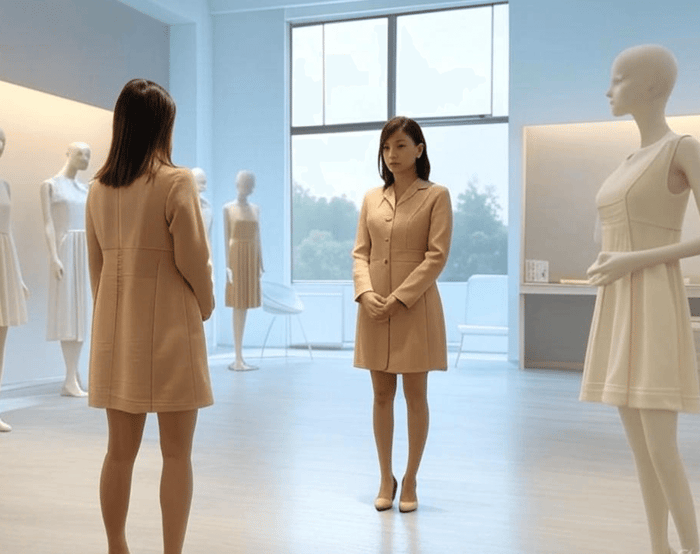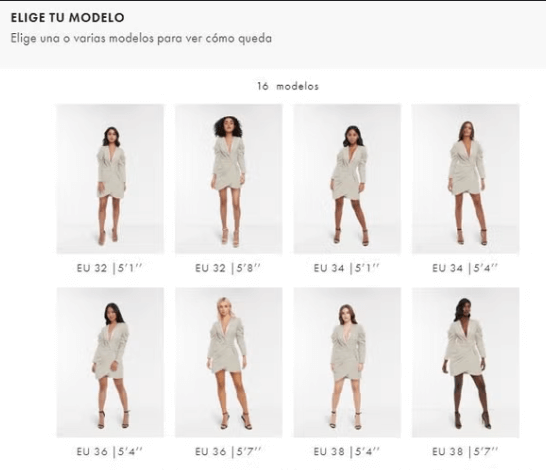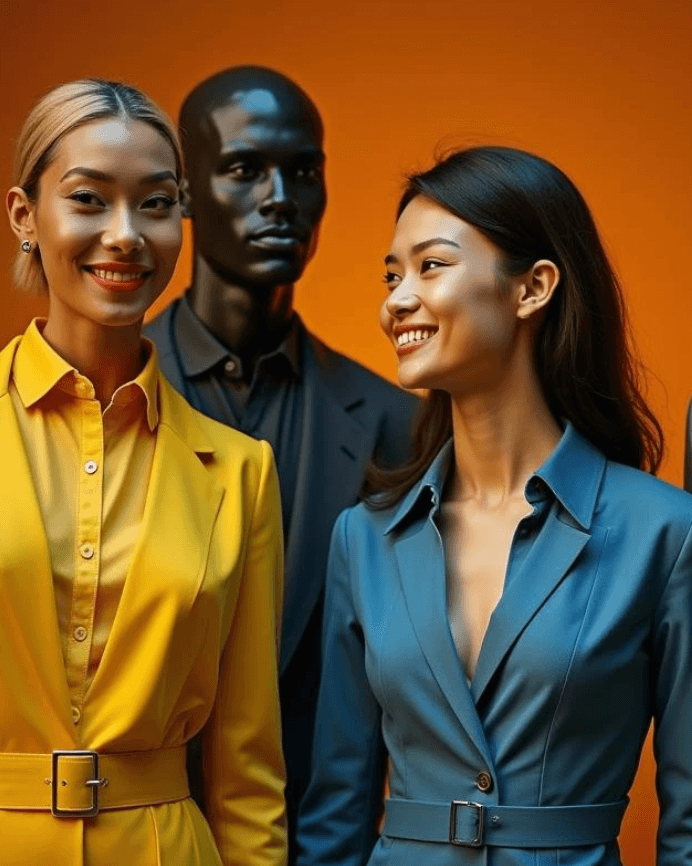Virtual Fitting Rooms: How Technology is Revolutionizing Online Shopping and Fashion
Table of Contents
In the fast-paced world of fashion and retail, the emergence of virtual fitting rooms is one of the most impactful innovations of recent years. With the rise of e-commerce and the growing demand for personalized shopping experiences, these digital tools are transforming the way consumers interact with clothing online. What was once a limitation of online shopping, the inability to try on garments, has become one of its greatest advantages thanks to virtual fitting rooms.
These virtual fitting rooms use technology to simulate the experience of trying on clothes without having to physically be in a store. By combining body scanning, real-time imaging, and advanced rendering, they offer a realistic view of how a garment would look on the shopper's body. This not only improves customer satisfaction but also reduces returns and waste, making the fashion industry smarter and more sustainable.

Virtual fitting rooms are digital platforms or tools that allow users to try on clothing virtually. These systems vary in complexity, ranging from basic overlay features to advanced solutions that use 3D modeling, augmented reality, and computer vision to create a lifelike try-on experience. The idea is simple: by uploading a photo, inputting measurements, or using a live camera, customers can see how a piece of clothing might look on them in real time. Some platforms also offer virtual mannequins or avatars that can be customized to match the user's body type and preferences.
One of the biggest issues facing the fashion industry today is the environmental impact of returns. Each returned item means more transportation, more packaging waste, and often discarded products that cannot be resold. Virtual fitting rooms help solve this problem by improving sizing accuracy and reducing impulse buys. By helping customers find better-fitting clothes from the start, these tools support more mindful shopping and contribute to sustainable fashion practices. Brands benefit from lower return rates, and the planet benefits from reduced waste.
Why Virtual Fitting Rooms Matter in Online Shopping
One of the main challenges in online shopping has always been the lack of physical interaction because customers often hesitate to purchase clothes without trying them on first. This leads to a high rate of returns, which not only impacts a brand’s bottom line but also contributes to environmental waste. These fitting rooms address this problem by bridging the gap between digital comfort and the physical experience by offering a realistic sense of fit and style. These tools give shoppers greater confidence in their choices, resulting in fewer returns, happier customers, and greater trust between brands and buyers.

Another major advantage of virtual fitting rooms is personalization. Shoppers can tailor their virtual try-on experience to their specific size, body shape, and preferences. Some platforms even learn from user behavior to suggest better-fitting styles or provide smart recommendations. This level of customization goes beyond what is possible in a traditional store.
Online platforms can remember preferences, suggest complete outfits, and provide detailed visualizations, making each shopping journey unique and engaging.
How Fashion Brands Are Using Virtual Fitting Rooms
Leading fashion brands and retailers are investing heavily in virtual fitting rooms to stay ahead of the digital transformation. Companies like Zara, ASOS, and Nike are incorporating these tools into their mobile apps and websites, offering customers a seamless and interactive shopping experience.


Technology Behind the Experience
The success of virtual fitting rooms depends on several technological components working together. Key technologies include:
3D Body Scanning: Captures accurate body measurements to create personalized avatars.
Augmented Reality: Overlays garments onto the user’s real-time image or environment.
Artificial Intelligence: Learns from user data to suggest sizes, styles, and looks.
Computer Vision: Detects and maps key points on the body to ensure garments align properly.
Together, these tools create an immersive and realistic experience that closely replicates the process of trying on clothes in-store.
Expanding Access and Inclusivity
This tools also help make fashion more inclusive because people with disabilities, those who live far from retail stores, or anyone who finds traditional shopping difficult can now access a realistic try-on experience from home. Additionally, virtual avatars can be customized to reflect a wide range of body types, skin tones, and identities, promoting diversity and body positivity in fashion imagery. This level of representation is helping the industry move away from narrow beauty standards and toward a more inclusive future.
Beyond shopping, virtual fitting rooms are also being used in fashion education and content creation. Design students can see with them their pieces on virtual models, test garment behavior, and visualize full outfits without the need for physical samples. These creative applications show how virtual fitting rooms are not just retail tools but powerful platforms for design, storytelling, and visual expression.
Modelia and the Future of Fashion Visualization
One standout example in the field of virtual fashion tools is Modelia. This platform offers high-quality digital visualizations that allow brands to showcase their collections using realistic virtual models. With Modelia, designers can upload images of garments and see them instantly styled on lifelike avatars, ready for campaigns, lookbooks, and online stores.
Modelia supports the same principles that make virtual fitting rooms valuable: efficiency, personalization, and sustainability. As digital fashion tools become more advanced, platforms like Modelia will play an essential role in transforming how we design, present, and experience fashion.

The Road Ahead: What to Expect Next
As technology continues to advance, virtual fitting rooms will become even more refined and accessible. Future developments may include:
Real-time size prediction based on posture and movement
Integration with smart mirrors and wearable tech
Fully immersive virtual stores with avatar interaction
Augmented reality shopping events and shows
These innovations will push the boundaries of what online fashion can offer, making it more intuitive, interactive, and inclusive.
The New Standard in Digital Fashion
Virtual fitting rooms are redefining the way we shop for clothes online, by combining technology with creativity, they offer a better, smarter, and more sustainable approach to fashion. As consumers become more digital and more conscious, tools like these are essential. On the other hand, for brands, these virtual fitting rooms are an opportunity to innovate, connect, and lead in a competitive market. For shoppers, they are a chance to enjoy fashion on their own terms, with confidence and convenience. And for the industry as a whole, they represent the future of fashion: personalized, accessible, and powered by technology.
Subscribe Modelia's newsletter and be aware of the latest news in fashion AI
How would you rate this article:
Related Articles
- Virtual Try-On Revolution: Experience Fashion, Makeup & More
- Shopify Conversion Rate Optimization Guide
- The Best Sustainable Fashion Brands Changing the Industry
- Fashion trends for 2026
- How to Wear Bold Colors in Fashion: Styling Tips for Vibrant Outfits
- AI Fashion trends forecasting for 2025
- Best 5 AI Pet Portraits Generators I Tested in 2025
- Ugly Christmas Sweaters: Funny, Festive & Unique Styles
- Text to Video AI: Revolutionizing Content Creation with Automated Video Generation
- Influencer Marketing for Small Business: Step by Step Guide


